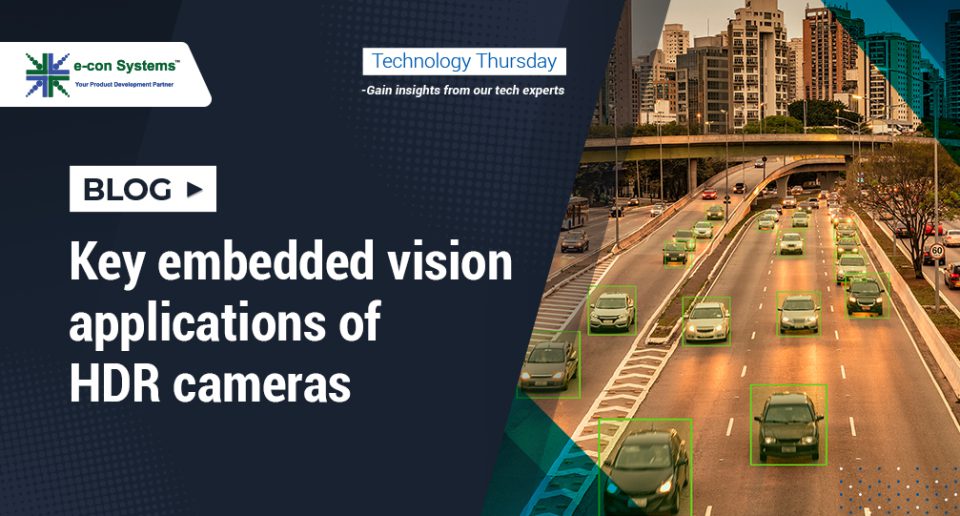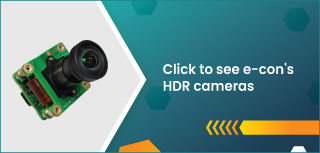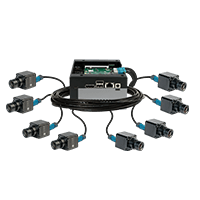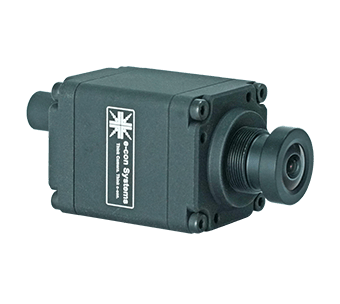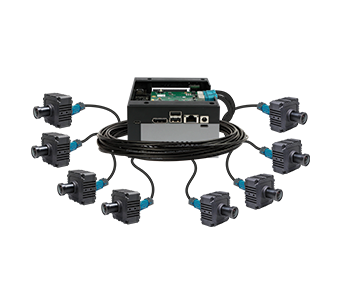One of the most critical challenges faced in traditional embedded vision applications is the inability to accurately capture images under varying lighting conditions. This is a key requirement for many camera based applications such as smart surveillance, smart traffic, autonomous mobile robots, agricultural vehicles etc. If a single scene contains both bright and dark regions, parts of the image captured in a normal camera would be either underexposed or overexposed. This is where HDR (High Dynamic Range) comes into play.
HDR cameras help overcome this challenge by capturing multiple frames of the same scene with different exposure times. To learn more about the concept of HDR and how HDR cameras work, have a look at the article What is High Dynamic Range (HDR)? How do HDR cameras work?
In this blog, we look at some of the most common embedded vision applications which require an HDR camera for capturing high quality images.
HDR cameras vs. Non HDR cameras: seeing the difference
Before we look at the applications, let us first try to understand the difference between HDR and non HDR.
The best way to do this is to compare the images captured using both types of cameras. Have a look at the below diagram to see a scene by scene comparison of the output received from a non HDR and HDR camera.
| Non HDR Camera | HDR Camera |
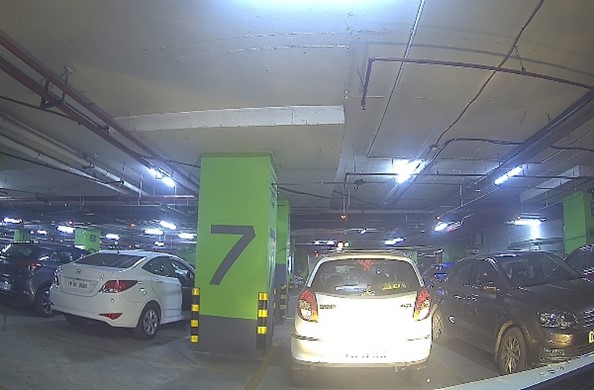 |
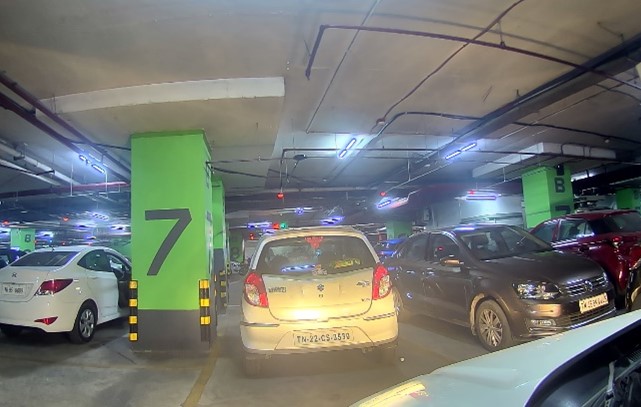 |
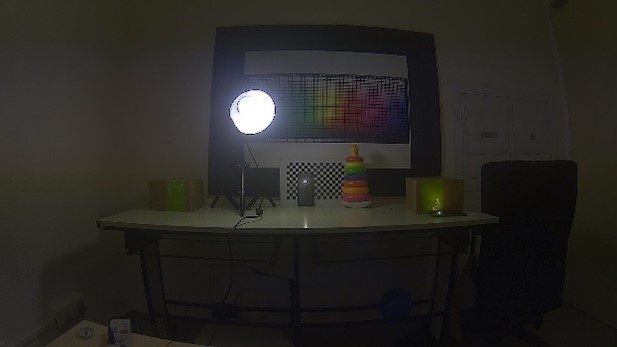 |
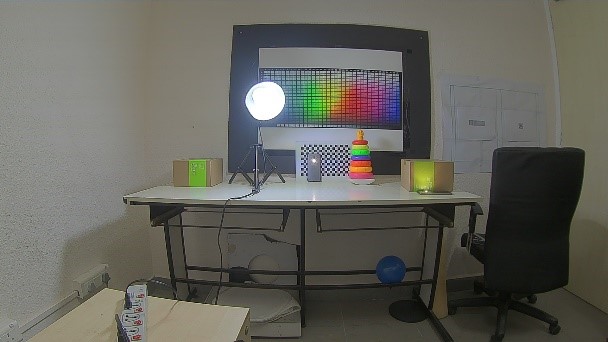 |
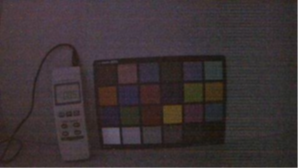 |
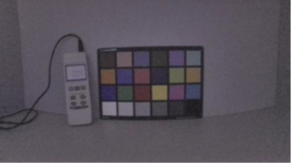 |
As you can see in the above comparison, while capturing bright areas of a scene, a normal camera is overexposed, and the bright section is almost washed out. Whereas in the case of a low light environment, a non HDR camera is unable to produce a clear and visible output. HDR cameras are capable of fixing both these issues.
In certain outdoor applications, a combination of HDR, 4K resolution, and large pixel size is really helpful. This is because high resolution helps the camera to cover a wide area and capture more details of a scene, which is very useful and sometimes necessary in an application like smart traffic management. Also, large pixel size is required in cameras which need to operate in low light conditions as it allows more photons to be absorbed by the sensor.
To learn more about why these features are important for an outdoor embedded vision application, have a look at Why 4K HDR cameras with large pixel size for outdoor applications.
What are the major HDR-enabled embedded vision applications?
There are numerous embedded vision applications that require an HDR camera. And there are new use cases emerging every day. Given below are some of the most popular use cases of embedded vision where HDR is recommended.
- Smart trolley and smart checkout systems
- Security & smart surveillance
- Robotics
- Remote patient monitoring
- Automated sports broadcasting
Let us now look at each of them in detail.
Smart trolley & smart checkout systems
Smart trolleys and smart checkout systems enhance customer experiences in retail stores by automating the checkout process using vision-enabled systems. This helps customers avoid waiting in a long queue during checkouts. In these devices, a multi-camera system is mounted on a shopping trolley or at the checkout counter to automatically capture images of objects in a shopping cart.
To learn more about how embedded vision transforms smart trolley and checkout systems, please read the article How embedded vision accelerates smart trolley and smart checkout journeys.
If you are interested in knowing how embedded vision helps in the smart retail revolution, you could also look at How embedded vision is contributing to the smart retail revolution. This article will give you a complete view of all embedded vision use cases in a retail store.
Now let us come to why HDR is required in smart trolley and smart checkout cameras.
HDR is required in such applications mostly because of the lighting in retail stores (both natural and artificial). Many of these stores have lightings that brighten up only a section of the scene to be captured. This may result in the inability to capture the complete object for accurate identification. HDR prevents this from happening by adjusting the exposure time to capture sections of a scene with varying light intensities.
Security & smart surveillance
Security and smart surveillance cameras are placed in roads & highways, parking lots, shopping malls & other buildings etc. A vast majority of these locations have a wide range of lighting conditions. For instance, an outdoor parking lot during daytime is likely to have bright sunlight, but at the same time a limited light supply during the night. Similar is the case with a building entrance. When it comes to indoor, artificial light sources create a similar environment.
With HDR cameras, these surveillance systems can easily track people/objects and identify faces by providing higher-quality videos despite the varying lighting conditions. Hence, it becomes easy to take critical security-related decisions even on the edge.
Smart traffic monitoring
Varying lighting conditions are inherent to traffic management. And many a times the camera has to directly face sunlight which makes it extremely difficult to produce a visible image. HDR comes to rescue here as well. HDR cameras make it possible for smart traffic systems to accurately read number plates of vehicles, recognize people’s face, measure the speed of moving vehicles etc.
To know more about choosing the right camera for smart traffic monitoring, please visit Choosing the right camera solution for smart traffic management.
Parking lot management
Like in the case of other applications discussed here, parking lot management also relies greatly on HDR cameras. Parking lots are primarily of three types – open lots (which are typically located in large open spaces or yards), indoor/underground parking spaces, and lots on road sideways or outside buildings. In all these cases, a camera system placed to help with automated number plate recognition, finding empty parking spaces, or counting vehicles has to face challenging as well as varying lighting conditions. This is why HDR is a necessary feature in most parking lot management cameras.
In addition, the image sensor used in HDR cameras typically has very high quantum efficiency, which makes it extremely sensitive to light. This makes it an ideal choice for an ever increasing surveillance efficiency requirement in parking lots.
ATMs, retail kiosks, and digital signages
Many ATMs, retail kiosks, and digital signages today use inbuilt cameras to streamline and safeguard their premises. They record the activity of customers, staff members, and vendors for the purposes of facial recognition, surveillance, and providing an enhanced user experience. Most of these systems need to operate 24X7. Also, these premises often have glass doors/windows – meaning that any image captured is likely to be directly exposed to sunlight. It’s why HDR cameras are strongly recommended in such cases.
Robotics
Cameras used in patrol robots and other AMRs (Autonomous Mobile Robots) have to work in bright outdoor lighting conditions as well as indoor environments where the lighting of the scenes to be captured can be varying. For instance, a patrol robot needs to do surveillance during bright daylight as well as night time. At the same time, a warehouse robot has to sometimes capture images of a scene with both bright and dark scenes (say the scene of a warehouse entrance with artificial lighting inside and sunlight coming from outside).
HDR comes in handy in such situations and helps robots in accurate image capture for the purposes of navigation, obstacle detection, object identification etc.
Remote patient monitoring
For monitoring patients at home, cameras should come with high sensitivity to capture images in challenging light conditions. While the camera typically has to set a low exposure time during the day, a high exposure time is required during the night, especially during sleeping hours to ensure continuous monitoring. When equipped with an HDR camera, the patient care system allows users to see details and movements in videos with great clarity.
To learn more about how embedded vision is positively impacting remote patient monitoring systems and at home patient care, please visit Role of embedded vision in empowering post operative and at home patient care.
Automated sports broadcasting
Even though HDR is not a must have feature for AI-driven automated sports broadcasting, in cases where cameras have to directly face the Sun, HDR is recommended. Also, if the matches to be captured occur mostly under bright sunlight, the importance of having HDR increases. To understand more about choosing a camera for automated sports broadcasting and the role of HDR in it, read the article Choosing the right camera for automated sports broadcasting – everything you need to know.
Get to know how e-con Systems helped a global amateur sports broadcaster automate soccer broadcasting and improve the viewing experience.
HDR cameras from e-con Systems
e-con Systems has been designing, developing and manufacturing custom and off-the-shelf camera solutions since 2003. We have an impressive portfolio of HDR cameras, including STURDeCAM31, which is one of our recent products rapidly gaining popularity.
Some of the other HDR cameras we offer include:
HDR USB Cameras
- See3CAM_CU31 – Sony® ISX031 3MP 120dB HDR USB Camera
- See3CAM_CU81 – AR0821 4K HDR USB Camera With 1/2″ Sensor
- See3CAM_37CUGM – 3MP Monochrome Sony® IMX900 HDR Global Shutter Camera
- e-CAM83_USB – 4K High-Resolution HDR USB Camera Based on Sony IMX317
HDR Camera Modules
- Sony ISX031 Camera Module
- 3.2 MP Sony® Pregius S™ IMX900 Global Shutter Camera Module
- e-CAM82_CUMI0821_MOD – 8MP (4K) HDR MIPI Camera Module
- e-CAM27_CUMI290_MOD – 2MP IMX290 Camera Module
- e-CAM20_CU0230_MOD – 2MP Industrial-Grade HDR Camera Module
NVIDIA HDR Cameras
- STURDeCAM88_CUOAGX – 4K 140dB HDR Camera for NVIDIA® Jetson AGX Orin™
- STURDeCAM31_CUOAGX – 3MP 120dB HDR NVIDIA® Jetson Orin™ Camera
- e-CAM31_CUOAGX – Sony ISX031 120dB HDR Camera for NVIDIA® Jetson AGX Orin™
- STURDeCAM34_CUOAGX – 3MP 140dB HDR Camera for NVIDIA® Jetson AGX Orin™
- e-CAM81_CUNX – 8MP HDR Camera for NVIDIA Jetson Xavier NX/TX2 NX/Nano
- NileCAM21_CUXVR – HDR GMSL2 Multi-Camera Solution for NVIDIA Jetson AGX Xavier
- e-CAM20_CUXVR – Sony STARVIS IMX290 Synchronized HDR Multi-Camera System
- SmarteCAM – IP66-Rated AI HDR Smart Camera
GMSL2 HDR Cameras
- STURDeCAM88 – 4K 140dB HDR Front-View Camera for Mobility
- STURDeCAM31 – IP69K Automotive-Grade GMSL2 HDR Camera with LFM
- STURDeCAM34 – 3MP AR0341AT 140dB HDR Camera Module
- STURDeCAM20 – IP67-Rated Full HD GMSL2 HDR Camera Module
- NileCAM21 – Full HDR GMSL2 HDR Camera Module with LFM
Smart HDR Cameras
Please visit our HDR cameras hub page to have a look at all our HDR cameras. You can also check out the Camera Selector page to view our entire camera portfolio. If you need help integrating HDR cameras into your products, please write to camerasolutions@e-consystems.com.

Prabu is the Chief Technology Officer and Head of Camera Products at e-con Systems, and comes with a rich experience of more than 15 years in the embedded vision space. He brings to the table a deep knowledge in USB cameras, embedded vision cameras, vision algorithms and FPGAs. He has built 50+ camera solutions spanning various domains such as medical, industrial, agriculture, retail, biometrics, and more. He also comes with expertise in device driver development and BSP development. Currently, Prabu’s focus is to build smart camera solutions that power new age AI based applications.




